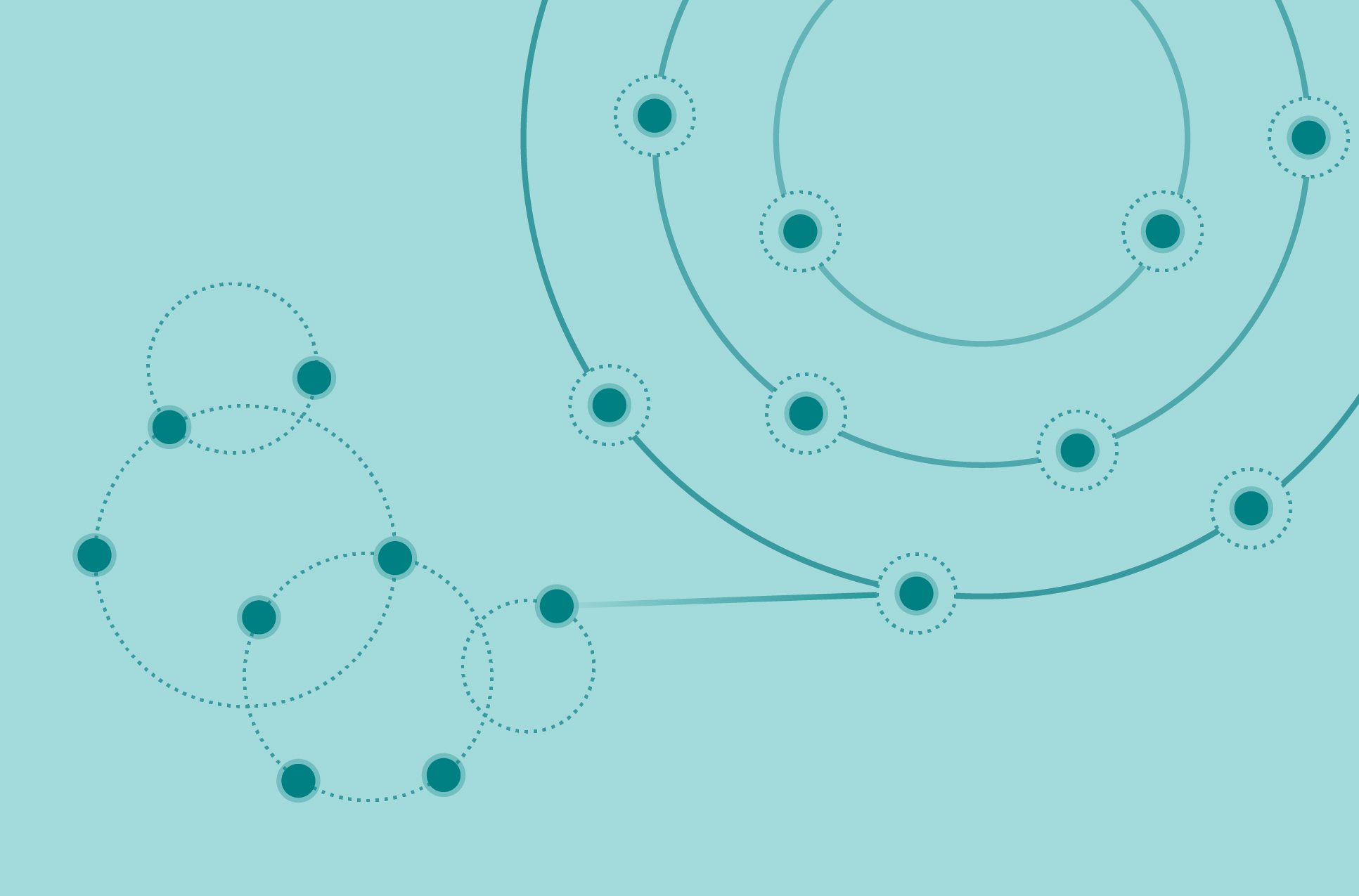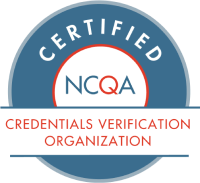
We are on a journey of innovation in healthcare. As we strive to continually provide value to people, healthcare organizations also need to constantly face the challenges that come their way. Back for the second time to continue the last episode’s discussion, Tracy Bahl of andros helps us navigate, this time, value-based care. He talks about the transition he made in his career from an operating role to an investor-focused role over the last few years. Now, Tracy is also a Managing Director of Valtruis. He puts on his investor hat to share with us what he is looking for when making investments in healthcare companies. He then talks about the changes the public health emergency has catalyzed—from omnichannel to other consumer-directed products and technologies. Look ahead to the future of healthcare and learn whether value-based care is already here or yet to come.
—
Watch the episode here
Listen to the podcast here
Navigating Value-Based Care And The Future Of Healthcare With Tracy Bahl
Welcome to the show where we explore what’s happening at the intersection of healthcare and technology, and most importantly, the people who are getting after it and making our healthcare system work better. I’m Mike Simmons, the Founder and CEO of andros. I am joined as always by my friend and co-host, Brett Zelkind.
I’m looking forward to having the conversation with Tracy. It’s going to be thrilling.
Tracy is a lot of fun. He doesn’t like to admit it, but he’s got a lot of wisdom racked up over the years that he’s been an executive in healthcare. I’m excited to explore this conversation, hear where he thinks we are in the journey of innovation in healthcare, and what’s coming next. Let’s see where this takes us.
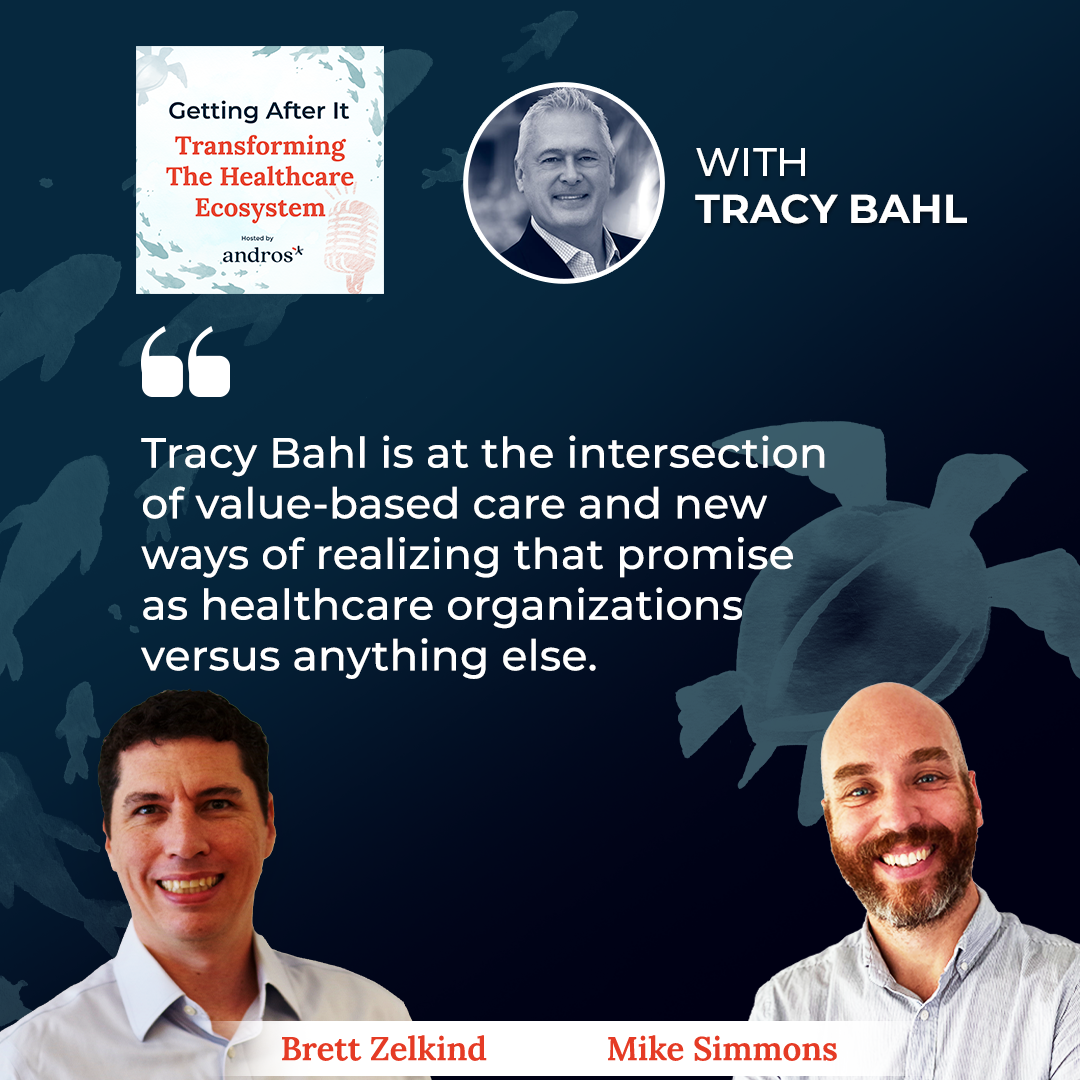
I was thinking about the transition that you have made in your career from operating to having more of an investor-focused role over the last several years. Starting up the Valtruis investment brand, were you looking at the intersection of value-based care and new ways of realizing and trying to realize that promise of making it more about the value we are delivering as healthcare organizations versus anything else like cost reduction? One of the things that I have always thought about is there is a conflict between the stakeholders that comes into play in a material way when you are looking at value-based care.
On the surface of it, payers are seeking to reduce the total amount of cost or at least optimize it. Hospital-based settings are looking to utilize their institutions. In order to pay for the real estate and the beds and all the equipment that they have, they have to have people in those beds, which seems antithetical to trying to keep people healthy.
You have patients who are often constrained by their own finances and might be looking to cut corners in how they are adhering to prescriptions or avoiding preventative care measures because they want to stay away from any out-of-pocket spend this month or what have you. A lot of that stuff seems to be in conflict with the Quadruple Aim. What do you think about that as an investor of trying to bring those things into alignment in new and innovative ways? What are you looking for as you think about making investments in companies?
That’s the beauty of value-based care. It brings those parties into alignment and then sends them around those four common elements of cost, quality, access, and the patient experience. The true conflict lies in the fee for service. The conflict has always been between the health plan or payer, insurance company, or employer government agency who wants to lower costs as much as possible. A fee-for-service-driven care provider, to your point, needs volume to improve its financial performance and a patient who wants the right care that they can afford.
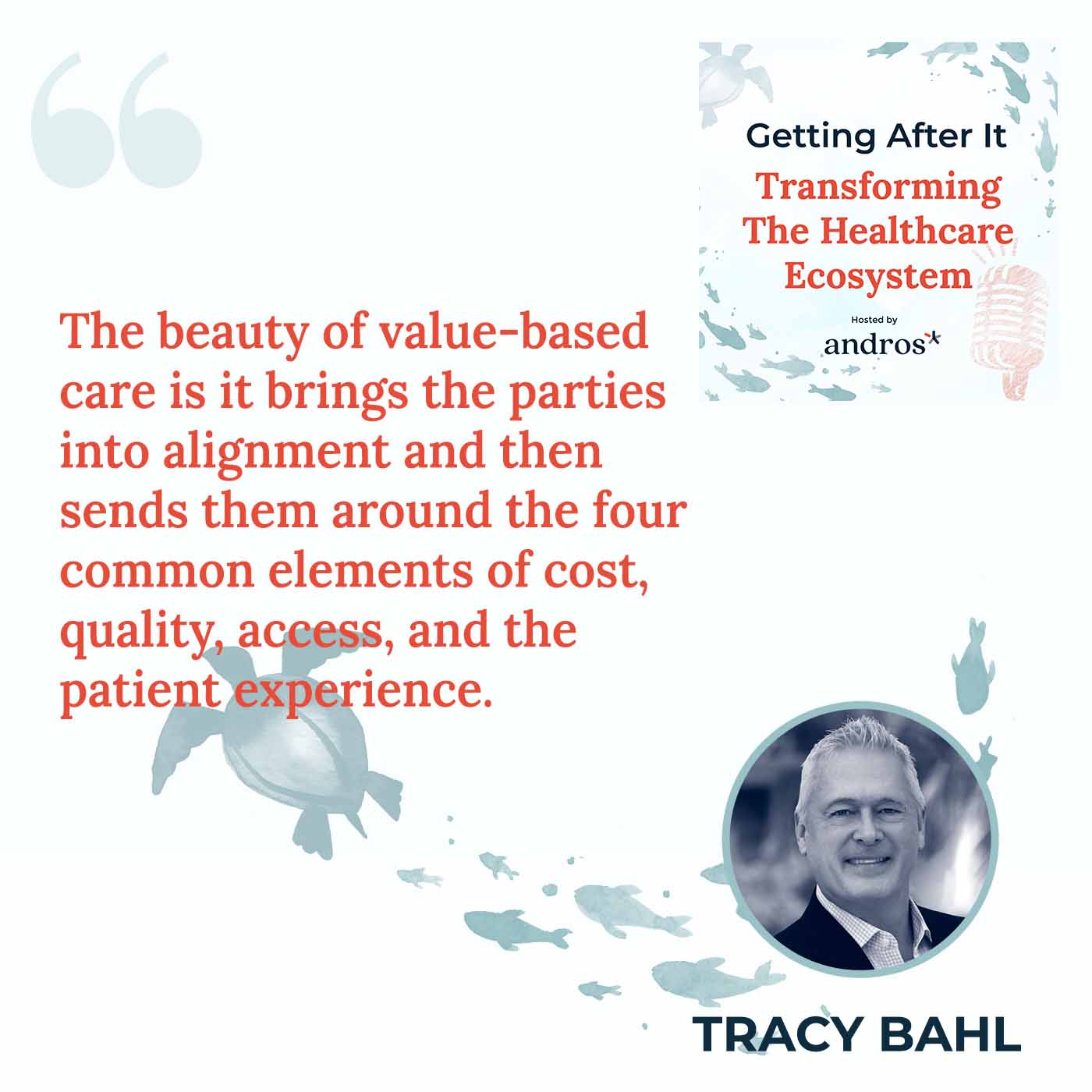
When you bring all of those parties into alignment, particularly when you pair value-based care with a consumer-directed or consumer-focused benefit offering, you begin to find the magic. That’s where you have all parties aligned to have a cost-effective and high-quality accessible experience that they enjoy and that works for all of them. That’s what we look for in our investments. It is if we can find approaches that bring the patient in a thoughtful way, align with physicians, and don’t fight with them.
Eliminate that friction or adversarial point of negotiation, which I was often at the center of in my early career and network folks are now, and turn that into one about how we can partner in a way that rewards all of us for achieving those goals. One of the reasons why our entire firm is excited about this theme is we believe it is a macro and mega sustaining and disruptive theme to healthcare over the longer term. There will be skeptics who will say, “People have been telling us value-based care is coming for 30 years,” and they are right.
It has been coming for many years. In many cases, it still hasn’t arrived. In some places, it may never. It will grow in fits and starts in different parts of the country, different specialties, and in different lines of business so it’s faster in Medicare in South Florida and primary care. It’s slower in other markets and certain specialties in the commercial. It will develop over time, but when it does, it will bring these once conflicted and adversarial parties into alignment in a good way.
For people who are less familiar with this stuff, what’s an example of a consumer-directed healthcare offering that you are referring to here? What does that mean?
During the Bush administration, it typically involves a plan design that has a high deductible offering paired with a health savings account that allows you or your employer to fund it with pre-tax dollars that can be used for healthcare in a way that gives you control over how you spend and where you go. You typically try to pair that with a degree of decision support tools that helps that consumer or patient make those healthcare decisions.
Transparency around quality cost accessibility and patient satisfaction ratings not only at the care provider level but also at the treatment level as well. If I have a sore knee, I have several options. I could have a surgical repair. I could try physical therapy. I could try weight loss. There are several things I can pursue. It helps me weigh those things and make a decision on what experience I want, what accessibility I want, how much I want to spend, and what’s the quality ratings of the path I would take. When you pair that with a value-based delivery context, you start to see that alignment come together.
In that example, essentially the individual’s ownership or share of the risk is that HSA account. Is that correct?
Yes. Well said.
If we take it a little bit further when we think about sharing that ownership or risk, how do you think about the provider’s ownership of that risk, the payer’s ownership of that risk, and since we are talking to you, the investor’s ownership?
There’s a simple answer to this question, and then there’s a much more complex one. The simple answer is the flip side of risk, which is rewarded incentive. The rewarded incentive should be at the level of the person most directly accountable for achieving the cost, quality, and access performance. It should be shared in those degrees. That’s often the physician.
However, the lines between payer and physician have been blurring for some time. They will continue to blur. Call them payviders or risk-bearing entities, pick a name. There is a growing convergence between the financiers of healthcare and the deliverers of healthcare both in terms of payment and reimbursement as well as ownership and capital structure.
[bctt tweet=”There is a growing convergence between the financiers of healthcare and the deliverers of healthcare both in terms of payment and reimbursement as well as ownership and capital structure.” via=”no”]
You look at Optum, which is a division of United Health Group. It is believed to be one of the largest employers of physicians in the United States. What are they? Are they a payer, provider, or both? That aside, the more complex part of that answer is one related to attribution. When you get into the value-based world, it’s increasingly more challenging to determine who was most accountable and who delivered the best component of that result. If you have a cardiology patient, a patient with heart disease, was it the value-based cardiology program that you have in place that the patient was part of, or was it the weight loss program that you have as part of your benefit plan?
They also have a comorbidity with diabetes. Was it the diabetes program you have in place? Which one of those do you attribute that reward to? That’s becoming increasingly complex and a challenge for all of us in this space. We think there are easier parts of the healthcare delivery system where some of these conditions become more discreet and they are defined by a biomarker, evidence, or episode that triggers.
Oncology is probably the easiest example. Once you are diagnosed with cancer, your oncologist becomes your primary care doctor. Much of your care, even though it may touch on other comorbidities, is driven through that oncology lens. It’s easier to attribute credit there. The same is true in kidney care. When you have end-stage renal disease, under dialysis, or chronic kidney disease, your nephrologist becomes a little bit more central to your life. Those are some of our early investments. We are in places where attribution is more discreet. It gets harder as you get into things like cardiology, for example, where there are a lot of players involved in the care.
It’s true when you were going through that example. The thing I was thinking about bring it back to social determinants, somewhat here as well. We use that example of a patient member with a cardiac condition, and then I’m thinking it could also be the low-sodium foods that are delivered as a benefit from that person’s Medicare Advantage plan, thinking about healthcare not being the delivery of medical care, but the environment that surrounds you and how it impacts you.
You were mentioning remote digital monitoring at the very start. Perhaps we get there in the conversation. As a segue to that, if we think a little bit about the public health emergency that we have been experiencing over the course of the last couple of years, we think about the substantive changes. Perhaps that would be a good lead-in to think a little bit about remote digital monitoring as well. Can you talk a little bit about how you see the changes that the public health emergency catalyzed?
Like a lot of things, our collective COVID experience accelerated trends that were already developing in our lifestyles. It forced people to cross the adaption divide. There are people who willingly cross the adaption divide. They give up watching movie movies in a theater and start watching that home because they are interested in that. Others were forced to do that because the theaters were closed. When they did it, they found that it was not so bad. Maybe others may go back, and that’s our collective experience. The same is true in health.
[bctt tweet=”Our collective COVID experience accelerated trends that were already developing in our lifestyles.” via=”no”]
Importantly, are you going to go back to the theater?
Sadly, the regal cinemas are closing because of their bankruptcy in my neighborhood. I’m going to have to drive now to the movies. I happen to go bicycle into the movies as a productive digression. As it relates to healthcare, the same was true. We saw digital and remote diagnostics and therapeutics developing well before the pandemic.
We saw telemedicine developing well before the pandemic. The lockdown and our related experience forced a lot of people to cross that divide and many found that they enjoyed that. They found that it is more productive for them and a better experience for them. I believe that as we have seen in telemedicine, it’s backed off of its COVID highs, but the adaption is still multiples of where it was pre-pandemic.
This was an accelerating catalyst for that trend that was already underway. We will quickly, if we haven’t already, evolve to a different context. I’m borrowing other words and paraphrasing them in my own way, so tell me if you think this works. Omnichannel is clinically determined and preference-based. Omnichannel meaning care can be provided in a structured institutional setting, ambulatory setting, home setting, telemedicine or televised setting, digital sensing, or remote monitoring setting. Perhaps there are other modalities that I have missed, but it is this omnichannel offering that is clinically determined.
[bctt tweet=”Omnichannel is clinically determined and preference-based.” via=”no”]
First and foremost, your care provider or physician determines whether you are a candidate. Are you a candidate for home dialysis? Is your condition such that you are not? I still think we need our clinicians to define that. Then, preference-based. Does the patient like telemedicine? We have seen this play out in behavioral health, for example, where you saw the explosion of different types of remote and telemedicine platforms for behavioral health with all intended to address a legitimate problem, which was access. It was not only physical access during the pandemic but the availability of therapists and clinicians to help these patients.
These platforms did do that very well, but many people still wanted to have that in-person, “I want to be there talking to this person in a human setting.” We saw certain things like in the musculoskeletal space where some applications allowed you to do your physical therapy at home. Some of those applications got very high valuations.
Yes, they did provide a new dimension to that channel or a new channel to that omnichannel, but many patients had challenges with compliance, understanding the movements, and so forth, and were clinically determined to come back into a physical setting. It is having all of these channels available in a robust, stable, and secure way that is available to the clinicians to define the best application, and then patients determine based on their own preference of how they want to experience their healthcare journey. Hopefully, that’s the context we go into.
I think a lot about that second piece of clinically determined. There’s a lot of consumer-directed. That frontier is growing. You see hearing aids, for example, are now available over the counter or the muscular skeleton thing. You have new technologies that are totally consumer-driven like the workout gyms that are also looking at you and analyzing your movements and the weight machine hanging on the wall that’s also coaching you. It’s brilliant.
As we see those things developed in a consumer setting, watching those types of innovations become more clinically viable to help physical therapy. It’s very interesting to see both directions. You got hearing aids going more to the consumer, and then you have got working out and physical therapy coming more to clinical. That’s one of those intersections that are fun to explore.
To carry on through this point and get to closing here, I am super interested in where we are in the progression of radical change in healthcare as an industry. I would love to hear your perspective. You have talked a little bit about the promise of value-based care for 30 years. Disrupting the healthcare industry, we have been talking about that for decades too. What does that mean to you? How do you see us making progress on that journey, or is it still a bit of an intangible or unreachable goal that has legitimate friction to ever make that reality?
I have been in this industry for many years. Every day of those years, I have been excited about the opportunities and the progress we have to make within healthcare. It is so big economically and socially. It is so intimate to the human condition, and it is so broken that you can’t help but have innovation.
However, innovation is hard because of those three things. It is hard because it is so big and there are so many players that are so conflicted in many ways. You have the government that pays roughly half of healthcare in the United States. The rest is split between employers, consumers, and the like. All of them have an interest in how this plays out.
[bctt tweet=”Innovation in healthcare is hard because it is so big, it is so intimate to our personal experience, and it is broken.” via=”no”]
It is so intimate to our personal experience. It often touches the three most important things in our lives, our own health, the health of our family, and our money. You can’t get more intimate than that. It brings a degree of emotion and a degree of personal preference, characteristics, and personality into the decision-making that is quite unique.
It is broken because the technology’s been slow to develop in our space. It’s been slow to develop because the practices or the use of technology haven’t always been rewarded. We are continuing to see that move forward. It’s hard for healthcare to have a change or a pivotal or singular moment where the industry transforms and is disrupted in a single defined period.
It’s hard to pick those in healthcare. Even the advent of managed care took a decade or more to develop. Consumer-directed healthcare is a decade or more. These things take a long time because of the unique characteristics of healthcare, but they continue to move forward. There are innovative minds in government. That’s not an oxymoron. There are innovative minds in very large companies, which is also not an oxymoron, that are doing great things because they move scale very quickly.
I have mentioned a few, like UnitedHealth Group and others that have done some fascinating things at scale. Something in my day job that I see every day is smart people doing interesting things in healthcare that leverage technology and process improvement and are all grounded in a mission and purpose. Everything I said there describes andros and lots of other companies that are doing cool things in healthcare.
I would bet against a single event that disrupts healthcare in some transformative way that shifted us all to buying books online and put brick and mortar out of business in a matter of a year or two. I don’t see something like that in healthcare, but I do see us waking up a few years from now and going, “Look at what we did back several years ago and what it’s like now.” It would be radically different.
I look for those things whenever I go to the doctor, which is thankfully not very often. I was in a doctor’s office, and I thought of two things right in the waiting area. One is I’m still filling out my paper forms in order to see the doctor initially, but that paper doesn’t go into a file sitting behind the administrative desk area.
Somebody’s keying that in and it becomes a digital record. Why we don’t have a digital record in that waiting area is I do not know. It’s interesting to look at those incremental things. You are going to look back and you are going to say, “There was a time when X, Y, and Z.” I’m building an appreciation being in this moment because this is the time when we are seeing that change happen. Sometimes, it’s hard to detect but it was interesting.
Let me give you some hope at full disclosure. I am not an investor in Forward. We are not an investor in Forward. In fact, I’m a customer though. There’s a direct primary care model called Forward or Goforward Health. I am a patient of the one here in Miami. It’s a fascinating and radically different experience from what you described.
First, you walk in. There is no waiting room because you don’t wait. You go over to a touchpad and your initials are there. You touch your initials, and it has registered you. You step in front of a body scanner and it takes all of your vitals, and then you step into a room that does not look like a patient room at all, but rather has a comfortable chair and a giant almost the size of the wall screen in front of you.
Your doctor walks in and starts talking. She asks for a record. Let’s say your lab results. They pop up on the screen. By her voice, she starts to touch the screen and move things around and show you stuff. As she’s asking you questions, your answers are documented by voice recognition on the lower right side of that screen directly into your record.
You never see a piece of paper. There’s no badly photocopied form that looks a lot like the one you filled out the last time you were there. When you walk away, everything from that visit is documented in your app that you can come back to and reference. I don’t know whether that economic model works or not. I hope it does, but the experience gives me hope that there are people rethinking that whole process in a good way.
You see it in certain areas. That’s more on the cutting edge. It’s not at scale enough to be experienced by everybody in healthcare. For some, it’s going to be a long way off. It’s the same innovation model.
It is to rethink everything.
Early adopters are using it, hopefully bringing the cost of that down as it as the technology gets better and easier to produce. Before we know it, a decade after we think it should be here, it will be here, so there is help. This has been great to spend the better part of an hour with you here. I appreciate your time and insights. Brett, do you have any last thoughts?
There are two things. One is when you were reflecting on your experience, I was thinking you were going to say that the magazine’s selection had not improved at the doctor’s office in many years. Tracy, you shared with regard to your physician’s office visit. That is a great example of seeding transformation and disruption in how we think about the individual’s experience in the healthcare system.
A couple of notes that I wrote as we were having this conversation were medically appropriate. Patient preference with regard to how that experience is had is what ultimately drives adherence, which is required to achieve the Quadruple Aim that we have spent so much time talking about. It affects the total cost of care and enables reward for all. That would be my last statement.
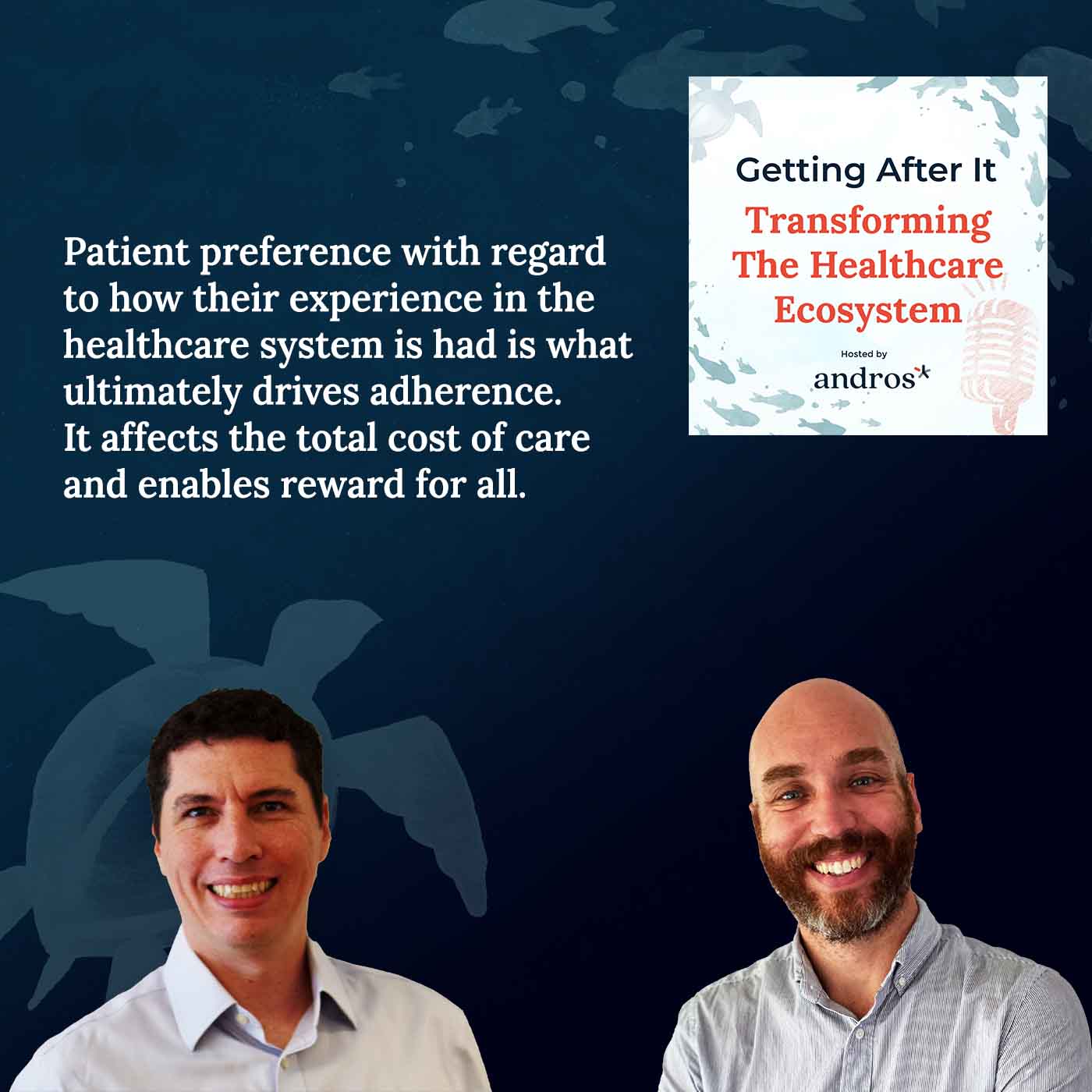
That’s a great one too. Adherence is sometimes viewed as a negative term, but it is so vital to how a patient achieves their clinical outcome. Some of the modalities we talked about are improving that. It is a very good point. I really enjoyed this. Thanks for giving me the opportunity. I’m so proud of what andros does every day. I’m excited about our future.
Thanks, Tracy.
Important Link
About Tracy Bahl
 Tracy Bahl is a Managing Director of Valtruis and an Operating Partner at WCAS, having joined in 2021 focusing on healthcare investments. He was formerly the President and Chief Executive Officer of OneOncology, a company dedicated to serving all those living with cancer through a network of leading community oncology practices across the U.S.
Tracy Bahl is a Managing Director of Valtruis and an Operating Partner at WCAS, having joined in 2021 focusing on healthcare investments. He was formerly the President and Chief Executive Officer of OneOncology, a company dedicated to serving all those living with cancer through a network of leading community oncology practices across the U.S.
Prior to OneOncology, Mr. Bahl served as Executive Vice President of Health Plans for CVS Health; Executive Chairman of Emdeon, an industry leading healthcare information and transaction services company; Special Advisor at General Atlantic; Chief Executive Officer of Uniprise, a UnitedHealth Group Company; and held various executive positions at CIGNA HealthCare. Mr. Bahl earned MBA degrees from Columbia University and the London Business School.

